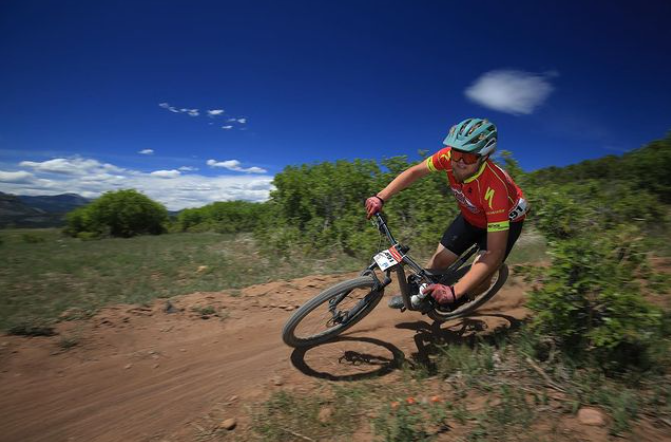Best trail bikes for beginners: Ride any trail and progress your skills
The best trail bikes for beginners are mid-travel full-suspension bikes that can ride a little bit of everything. Here is our pick of the best
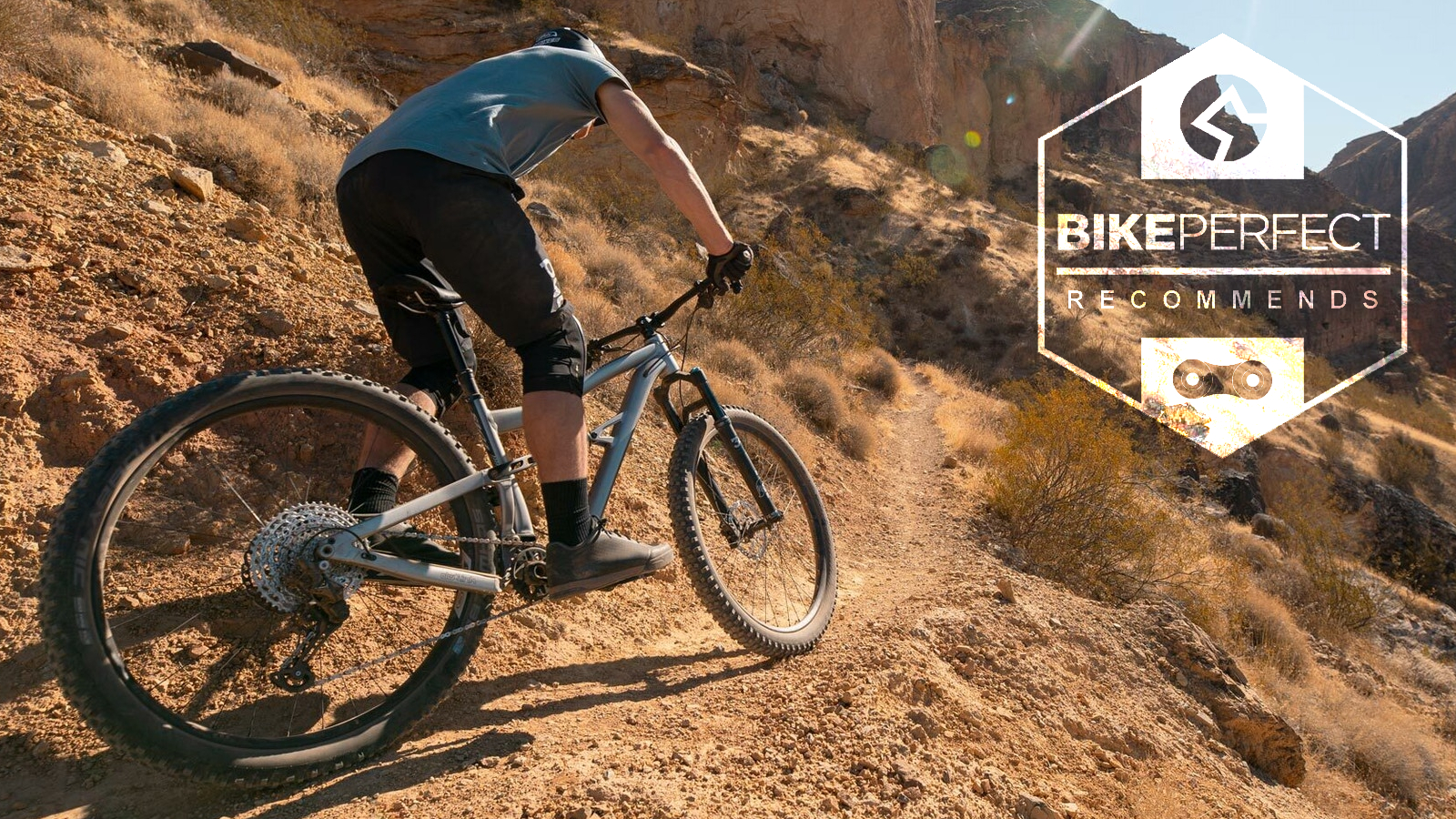
Trail bikes are the do-it-all mountain bikes, designed to do a little bit of everything. They're not as fast uphill as pure cross-country bikes, and they're not as fast downhill as modern enduro rigs, but they're pretty dang good at everything in between. Since trail mountain biking is one of the most popular segments of the sport, we've put together this list of the best trail bikes for beginners.
What is a trail bike, exactly? The best trail bikes generally have between 130 and 150mm of suspension travel in the front and the rear of the bike. Trail bikes are designed to be efficient across all types of terrain, whether uphill or downhill.
The best trail bikes for beginners should be easily found in bike shops around the world. This is why we've included bikes from larger brands like Specialized and Trek, so you can actually find one to buy and components can be sourced easily in case of repairs. We've also included some budget-friendly options on this list that offer good value, so riders can jump into the sport without feeling like they're making a huge investment.
- Trail mountain biking: everything you need to know
- Best mountain bikes for beginners
Best trail bikes for beginners
Why trust BikePerfect
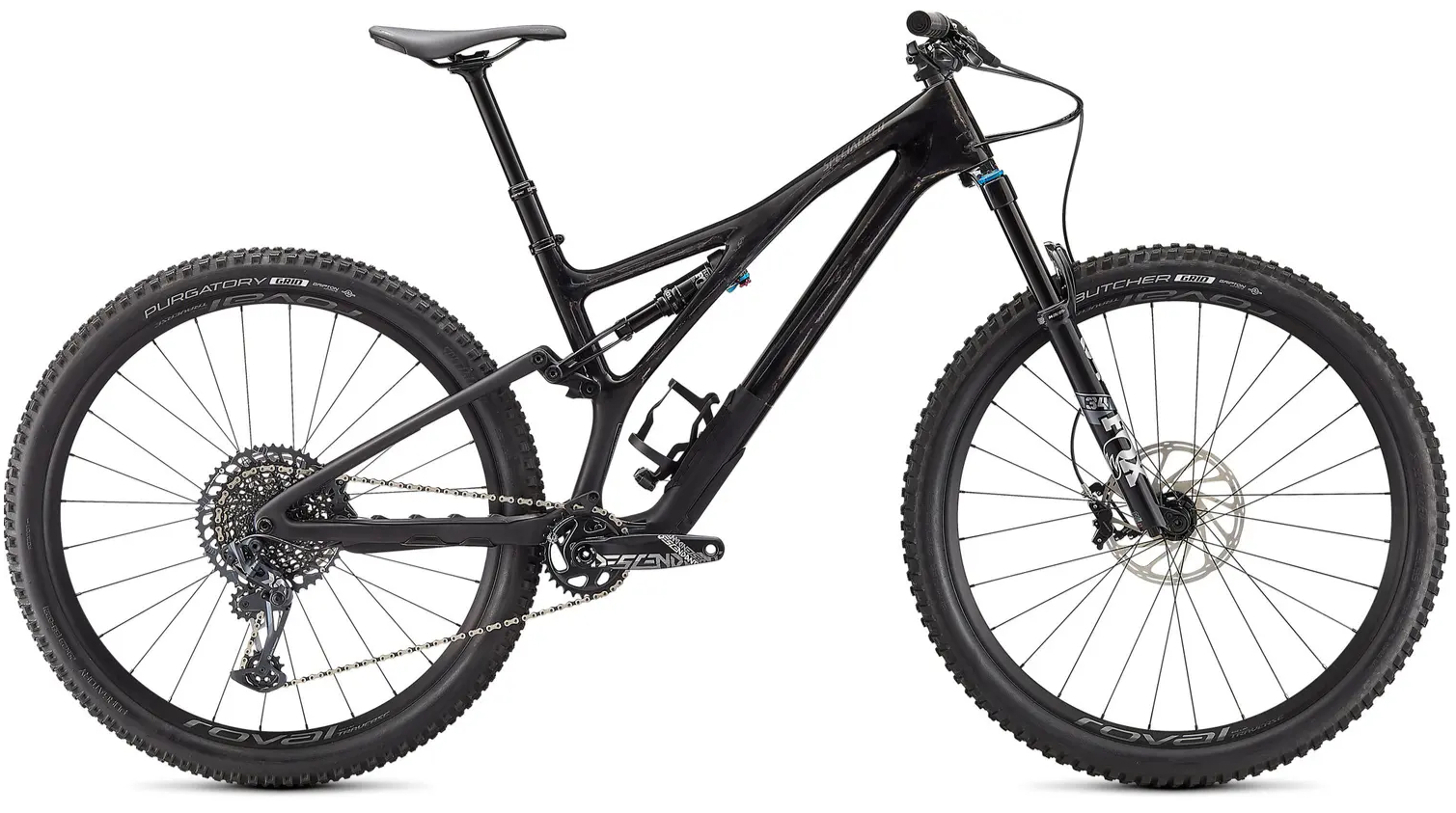
Specifications
Reasons to buy
Reasons to avoid
The Stumpjumper name has a long lineage dating back to 1981. The then-hardtail was the world's first mass-production mountain bike, and it has evolved many times in the years since. Today's iteration is a full-suspension trail bike with 130mm of rear travel.
For 2021, Specialized revamped the chassis, making the carbon-framed models lighter, and more significantly, went with a new suspension linkage design. Instead of using the FSR system, the bike now uses a small rocker linkage on the seat tube and a U-yoke mounting directly onto the rear of the shock. This all means that the bike is a well-rounded and balanced descender that can still keep up on the climbs.
Specialized offers the Stumpjumper at multiple price points, from the cheapest alloy model to the premium S-Works build, so any rider can find a package that suits their needs. The Expert model that we've reviewed features Fox suspension front and rear, a SRAM X01 Eagle 12-speed drivetrain, SRAM brakes, and Specialized Butcher tires. Another feature that's a fan favorite is the brand's SWAT system for storing essential riding supplies.
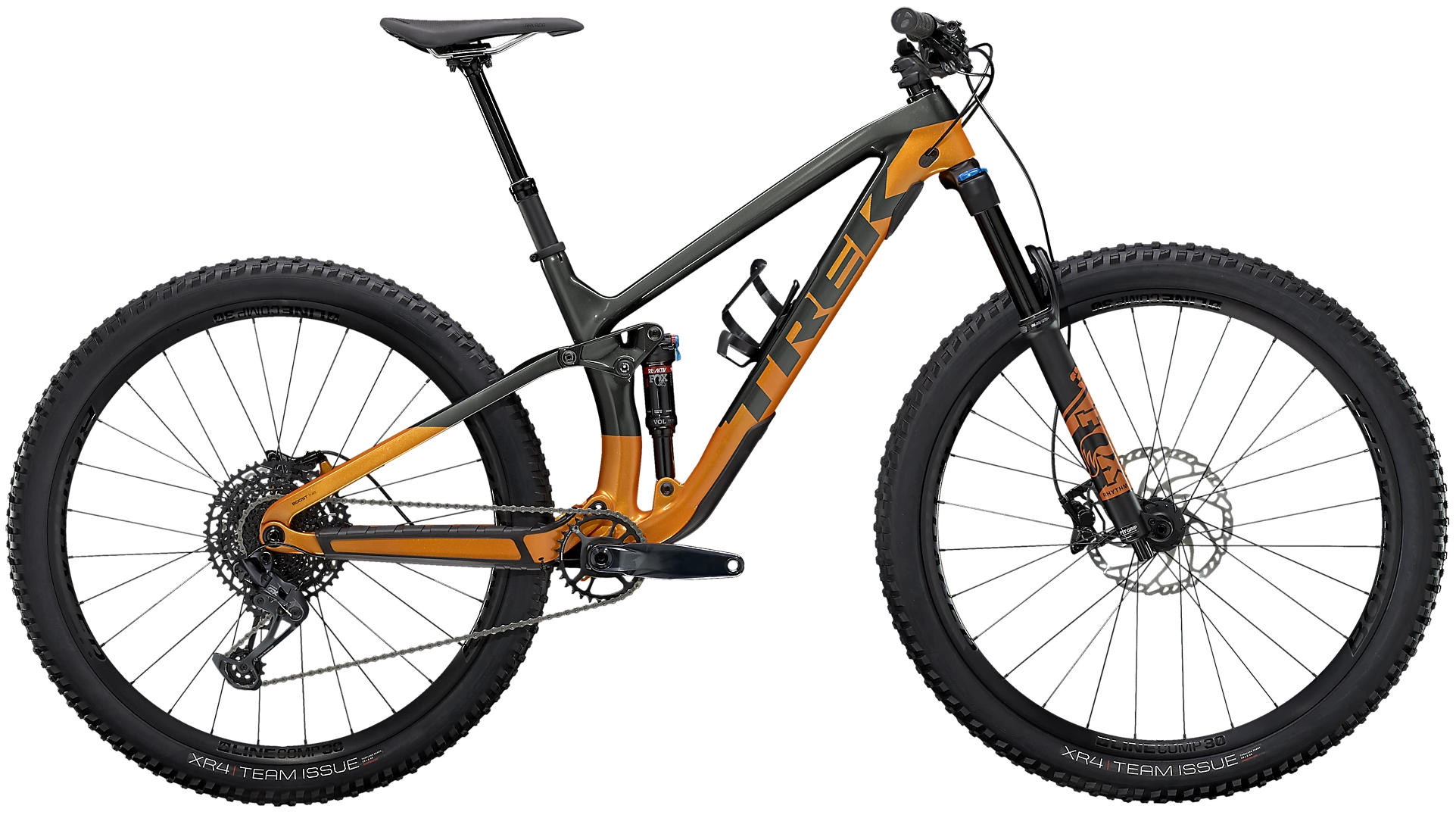
Trek Fuel EX 9.7
Specifications
Reasons to buy
Reasons to avoid
One of the perks of buying a bike from big manufacturers like Trek is wide availability in shops. Every city will have at least one shop that carries the brand, so you can find bikes to buy and get repairs done more easily. The larger brand also has supply chains and logistics nailed down, so it can produce bikes at a cheaper cost than smaller boutique brands can.
The price to performance value is what attracted us to this model; it's supposedly Trek's most affordable carbon full-suspension trail bike, making it a great value option. It features a carbon frame, solid components, and ripping geometry for just over $4,000 USD.
This one features full Fox suspension, a SRAM NX Eagle drivetrain and 4-piston Shimano braking. Most of the other components are from Trek's in-house brand, Bontrager. That drives the price down, and of course, you can upgrade to your preferred component brands if you want to customize the bike further.
The bike also comes with different wheel sizes, depending on the frame size. For shorter riders, the XS frame size gets 27.5-inch wheels, and the S size is offered in either 27.5in or 29in. The rest of the size range rolls on 29er wheels.
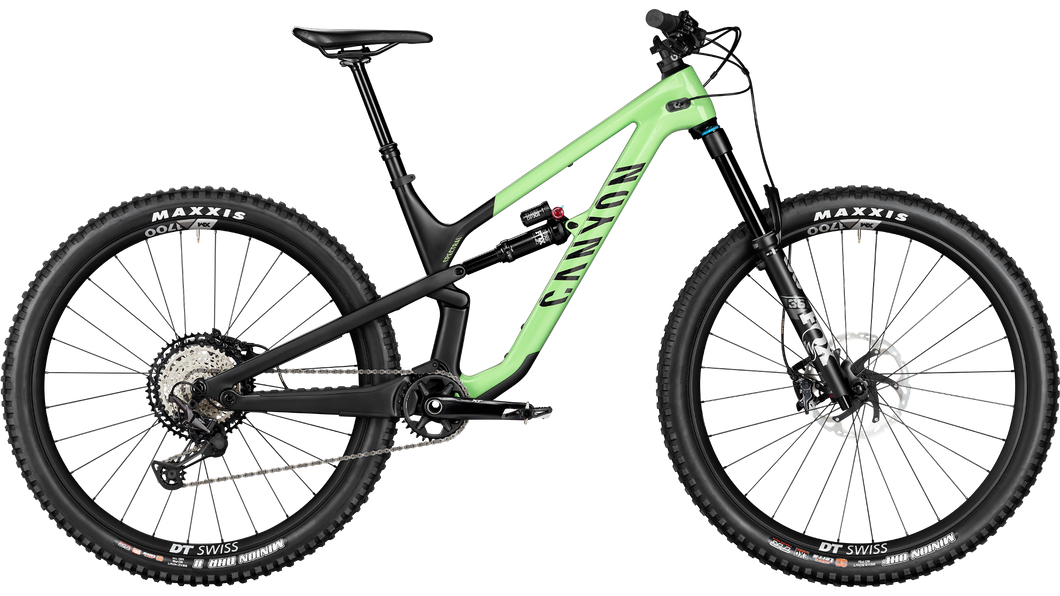
Specifications
Reasons to buy
Reasons to avoid
Beginner mountain bikers shouldn't overlook the benefits of buying a bike from a direct-to-consumer brand like Canyon. Riders can buy a bike on the internet and have it delivered directly to their door, often at a great value. The trade-off here is you don't have bike shop support and you need to have some bike assembly skills.
Canyon recently came out with the 29er version of the Spectral, and by all accounts, it was worth the wait. It keeps the same suspension layout as its smaller-wheeled sibling, but the geometry has been overhauled. A slack head angle and long reach create a modern trail-smasher.
Fox suspension and a full Shimano gearing and braking package create a hard-charging build kit. Maxxis tires will keep the tires on the trail through all conditions. The 150mm of rear travel combined with a 160mm fork means this is an ideal trail bike for those that love the long descents.
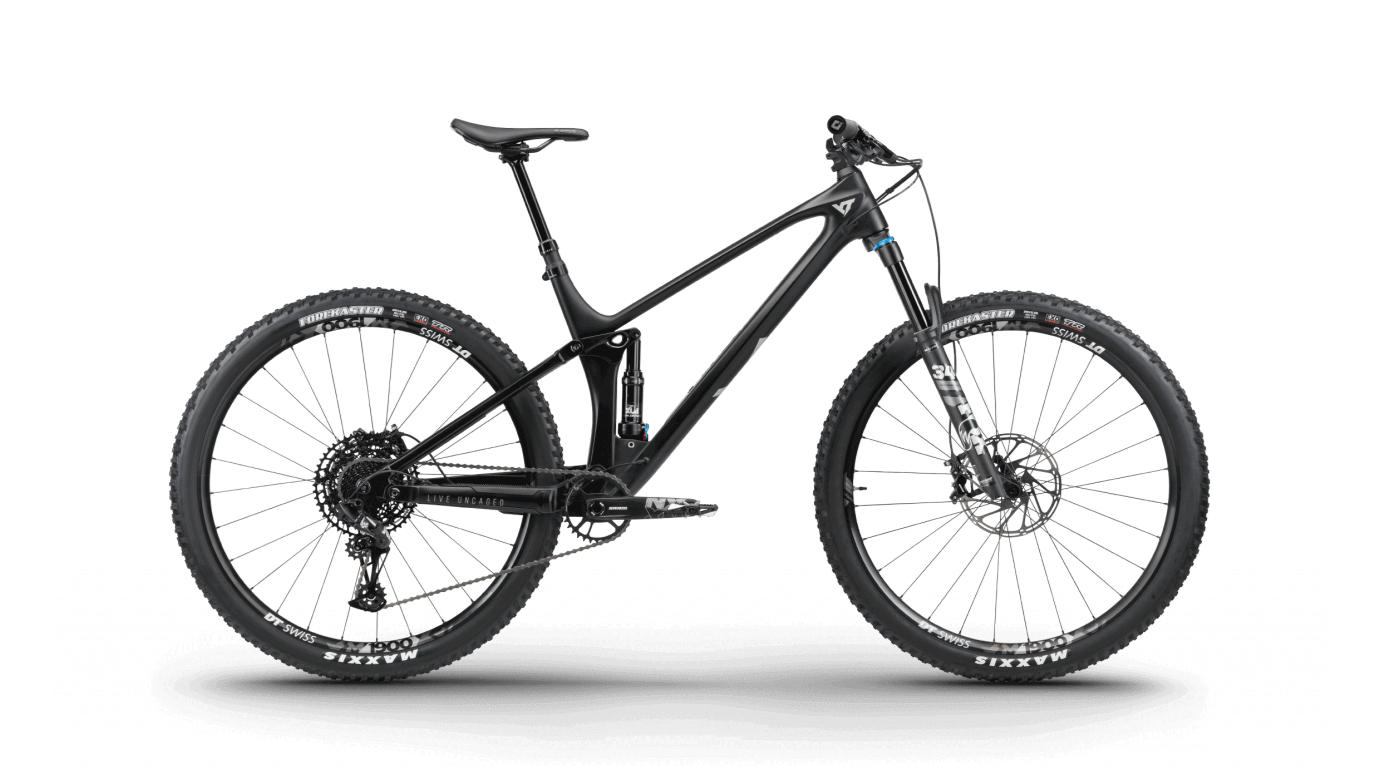
Specifications
Reasons to buy
Reasons to avoid
With the Izzo, YT is putting a little more XC into the trail bike category. While the best full-suspension mountain bikes are specially designed for World Cup racing, this bike is meant to be sharp and fast across all types of terrain. And it definitely won't hold riders back from being just that.
YT is another direct-to-consumer brand, so be aware of the trade-offs. YT Stands for Young Talent, though, so a lot of the brand's moves are geared toward beginner mountain bikers.
One such move is the pricing and build kits. With the Izzo, there are three 'core' models, with the Izzo Core 2 being the most budget-friendly. That model comes with a carbon front triangle and an alloy rear triangle for $3,399.
We've tested the top-of-the-line Pro Race model and found that the bike's handling and build kit are definitely XC-oriented. That doesn't mean you can't go fast on the downhills though, and swapping out a 140mm fork will increase confidence and DH stability.
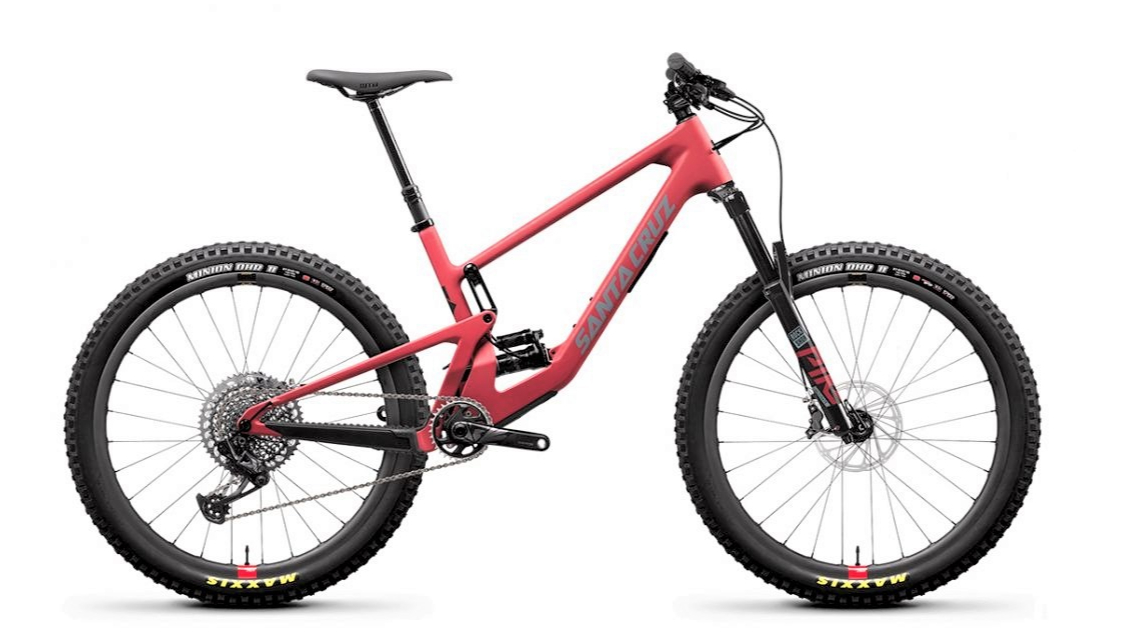
Specifications
Reasons to buy
Reasons to avoid
The 5010 is Santa Cruz's trail bike for riders who like to have a whole lot of fun. A 130mm frame is combined with a 140mm fork, and that's bolstered by 27.5-inch wheels. The smaller wheel size is not as stable as 29ers at high speeds, but that's not exactly the point of this bike.
The 5010 is perfect for aggressive riders who like to hit every jump, rail through corners, and whip their way along the trail. It's a bike to really show your riding style and personality on.
Santa Cruz offers two different carbon frames. There's the lighter and more expensive CC option or the more budget-friendly and less advanced C option. For beginner riders, Santa Cruz's Carbon C frames are a cheaper way to get a quality carbon mountain bike.
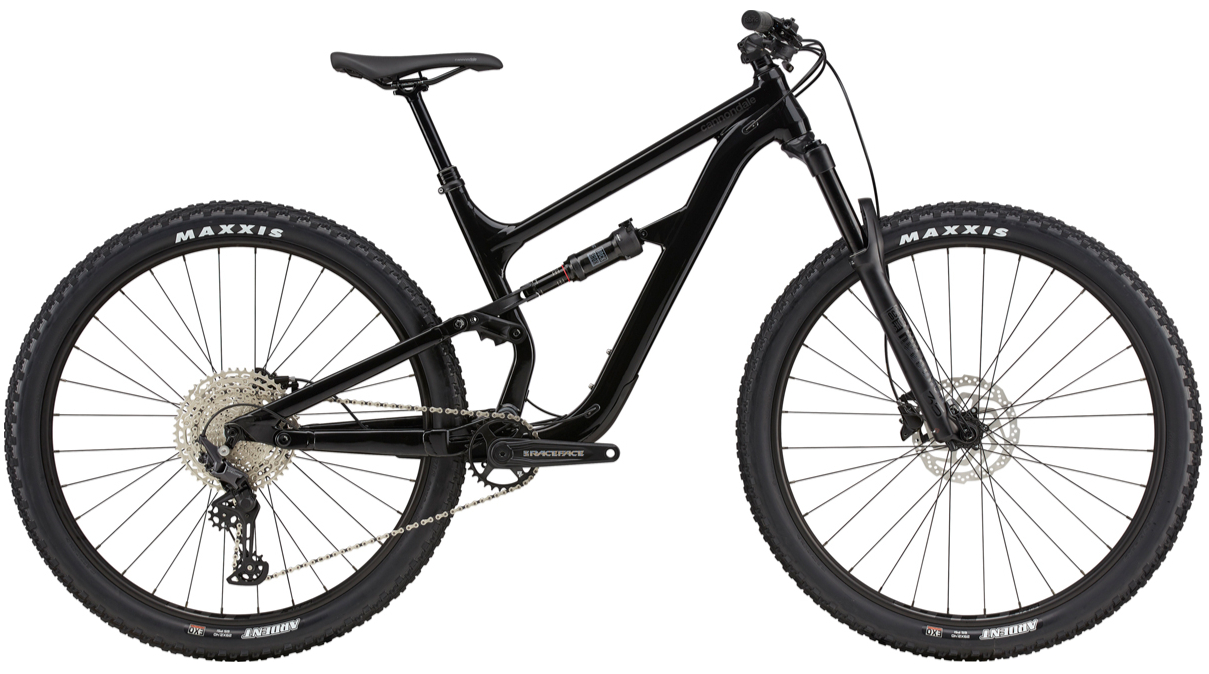
Specifications
Reasons to buy
Reasons to avoid
Cannondale has been bolstering its mountain bike lineup for a number of years now and that includes the Habit. This is a trail bike with 130mm of rear suspension travel and 140mm upfront.
Beginner mountain bikers may not want to drop thousands of dollars on a trail bike, so the Habit 5 model is designed to offer great performance at a lower cost. That's accomplished here by using an alloy frame, which does come at a weight penalty, but the performance is where the value comes in.
The rear shock creates a grippy, comfortable, and predictable ride that's reminiscent of the best enduro mountain bikes that cost way more than just $2,500. While a few of the spec options on this model aren't too great, the ride quality truly makes up for it. This is a great option for the mountain biker who wants to progress their skills and shred the downhills.
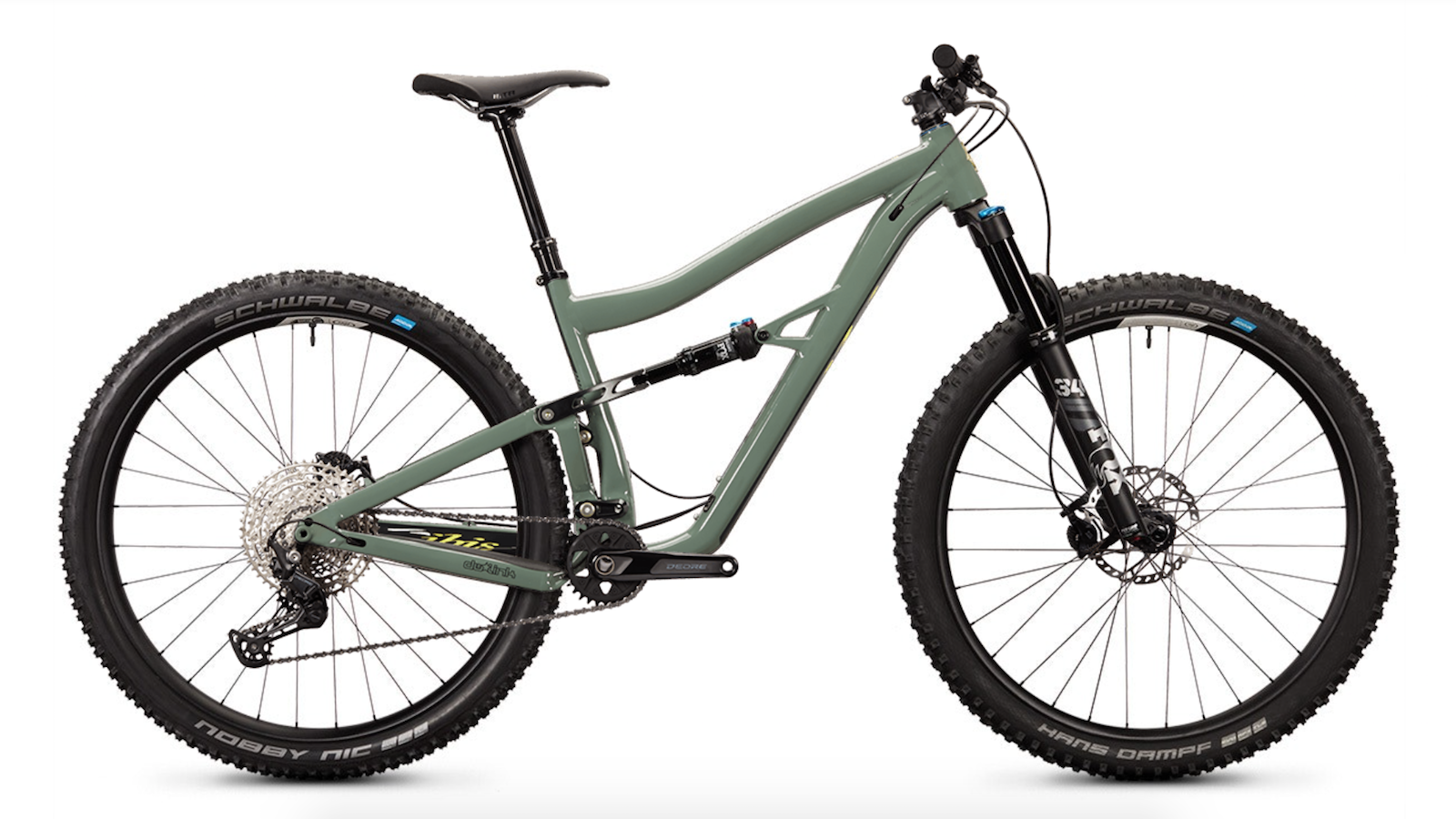
Ibis Ripley AF
Specifications
Reasons to buy
Reasons to avoid
Like we've mentioned, alloy bikes are a great way for beginner mountain bikers to get into the sport without having to sell their house and belongings. The Ibis Ripley AF (aluminum frame) takes the proven Ripley trail bike platform and transfers it onto a frame made from metal instead of carbon.
The Ripley is known to be a great-handling lower-travel trail bike with solid geometry. That means a 65.5-degree head tube angle, 76-degree seat tube angle, and 432mm long chainstays. This translates to a fast and confident trail ripper.
By no means is this an enduro bike, but it's not an XC bike either. It's perfect for long days with plenty of singletrack or playful after-work sessions. For $3,199 you'll get a full Shimano Deore build kit along with Fox Performance line suspension.
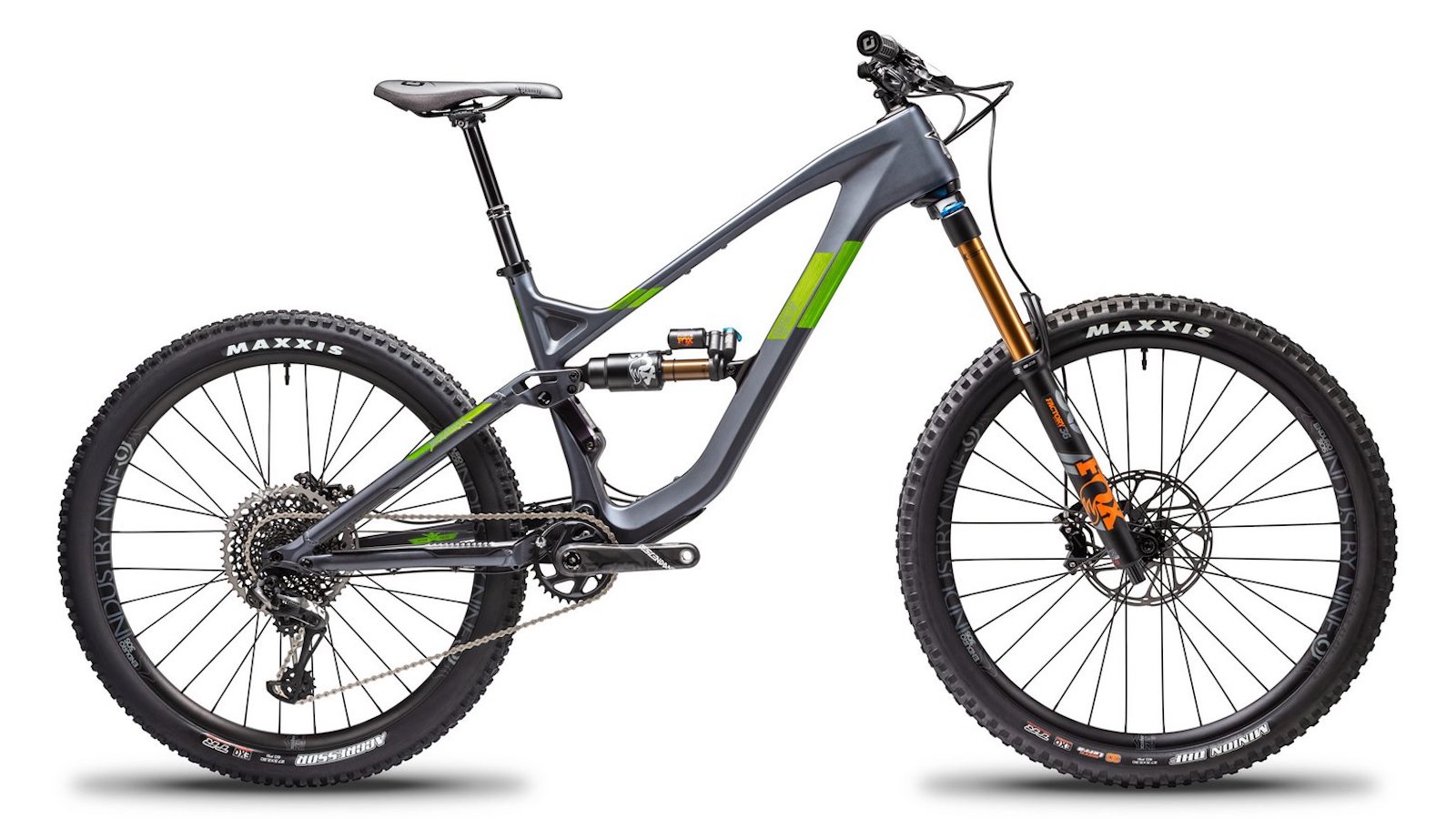
Guerilla Gravity Megatrail
Specifications
Reasons to buy
Reasons to avoid
Guerilla Gravity is a small brand based in Colorado who makes bikes that are a whole lot of fun on everything from your local enduro trails to the bike park. Despite the brand's small stature, the bikes are proven to be some of the best out there, thanks to an endorsement from the likes of Yoann Barelli.
The Megatrail is a longer-travel trail bike with 29er wheels. What makes these bikes so impressive is the bevy of neat features. You can change the geometry into 'Gravity mode' by adjusting just one bolt, so you'll have an adaptable bike no matter the terrain.
The company also strives to be more environmentally friendly. The bikes are made in the USA, so the lack of overseas shipping helps the planet and saves some money from leaving your wallet. The carbon process itself is also improved, with leaner manufacturing processes and more recyclable at the end of the product's life.
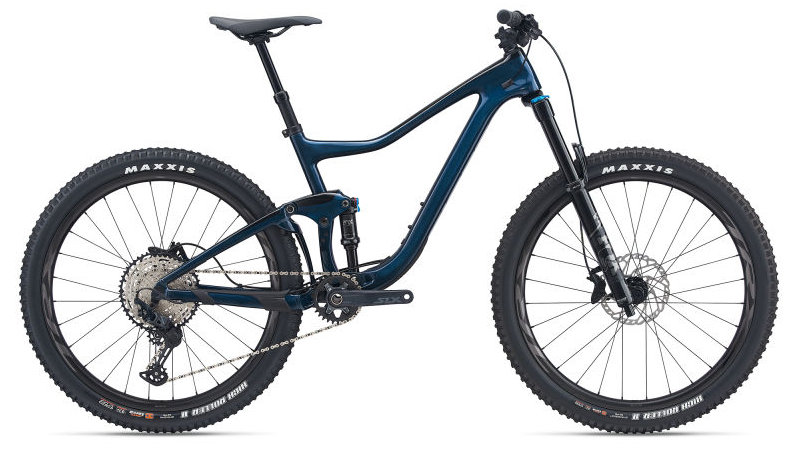
Giant Trance Advanced
Specifications
Reasons to buy
Reasons to avoid
The Giant Trance is another 27.5-wheeled bike that features 140mm of rear suspension travel and 150mm in the front. There's no doubt that this is a great beginner's trail bike that will leave riders in a trance, as its name implies.
The combination of smaller wheels and longer-travel suspension creates a platform that will satisfy beginners and advanced riders alike. The bike can flick its way down jumpy flow trails or tackle rock gardens with ease. And at a fair price, it's a good deal that can be found easily at tons of shops.
This model features Fox suspension, a Shimano drivetrain, and Maxxis tires for a smooth and fun ride.
For taller riders or those looking for better stability, Giant also offers the Trance in a 29er format, featuring 115mm of rear travel that's paired with a 130mm suspension fork
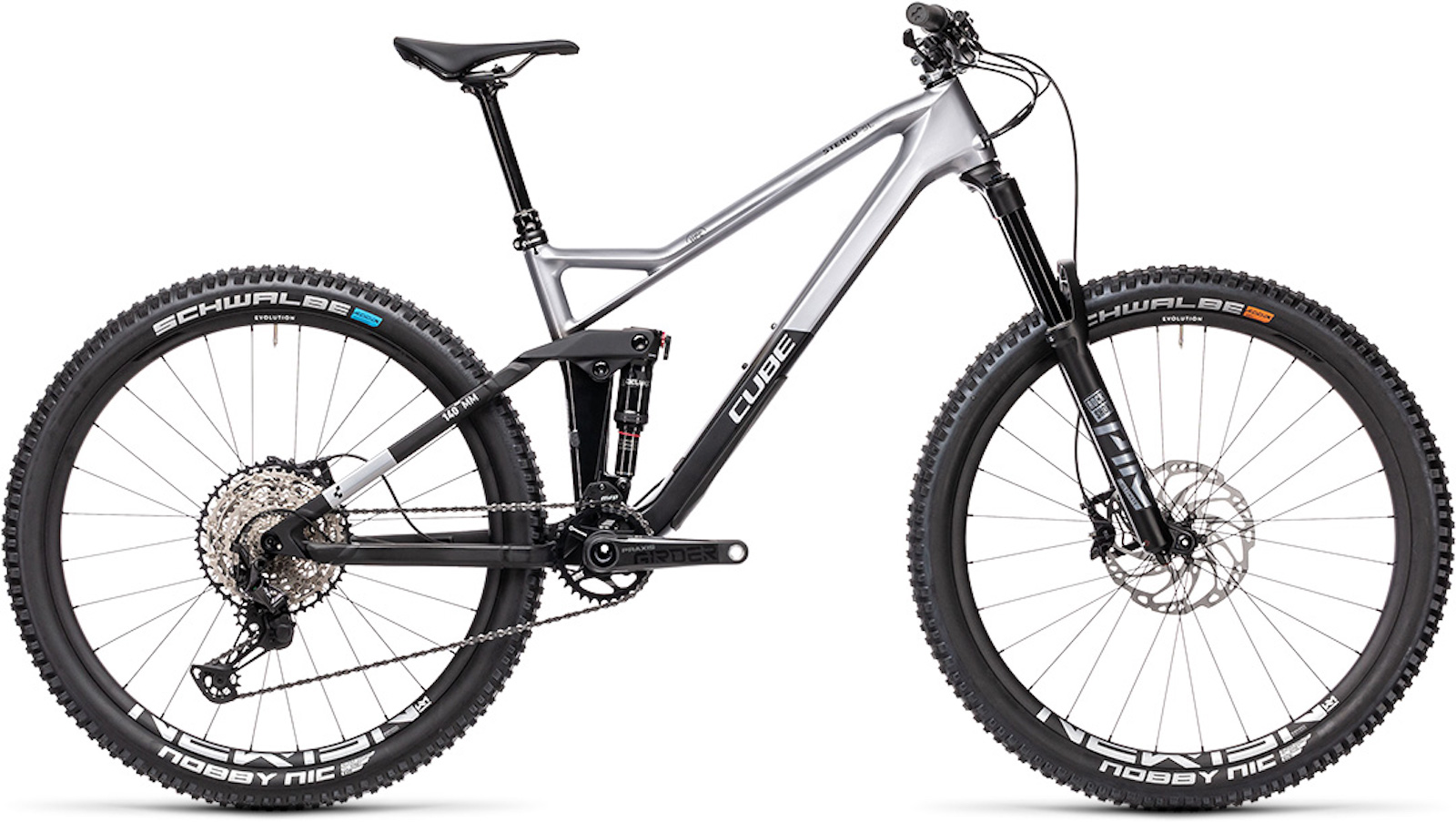
Cube Stereo 140 HPC SL 27.5
Specifications
Reasons to buy
Reasons to avoid
Cube's Stereo range of bikes offers something for everyone, from more XC-oriented rigs to enduro builds for everyday riders or racers. That's why we think the Stereo is great for beginner trail riders; you can pock your own flavor and roll with it.
The Stereo has been race-proven under Enduro World Series riders like Greg Callaghan, so you know that these bikes are speedy. The Stereo 140 features 27.5-inch wheels to tackle the tightest of corners. In addition to RockShox suspension, there is a SRAM drivetrain, Shimano brakes, and a selection of other premium components.
There's truly a wide range of builds in the Stereo family, so go ahead and check them out for yourself.
Best trail bikes for beginners: Everything you need to know
Frame material
There are three main types of frame material on this list: full carbon, alloy, and a mixture of the two. Full carbon frames are lighter than the other two options, but they are more expensive as well. Brands are learning how to manufacture carbon frames to cater to lower price points. Alloy frames are heavier but can produce some great value. Some frames will use a carbon front triangle with an alloy rear triangle. This is again cheaper, but lighter than full alloy. It mostly comes down to what you can afford. While carbon can be a big draw if it's within your price range, it can sometimes be more worthwhile buying an equally-priced alloy bike as the components will be better.
Suspension travel
Trail bikes are usually around 130-150mm in travel, but some feature less than that and some more. Bikes with 120mm of travel are more XC-oriented and biased toward pedaling efficiency and climbing, while bikes with more travel are biased toward the downhills. It's all about personal preference and where you live. If you live somewhere flat, it makes sense to get a bike with less travel compared to someone who lives near big mountain descents.
Components
Even on budget models, spec sheets are getting more and more dialed in. The suspension will usually come from RockShox or Fox. Cheaper suspension will have less tuning ability to play with, although factory settings and tunes are pretty good these days and you can always upgrade if you need more adjustment. Shifting and braking almost always come from SRAM or Shimano. It comes down to personal preference, but it's hard to go wrong with either. It's almost unheard of now to find a trail bike without a dropper seat post - you'll want one, trust us.
Wheel size
Most trail bikes are 29ers, but some use 27.5-inch wheels too. The bigger wheel size is faster-rolling and is more stable at speed. Some prefer the 'playful' nature of smaller wheels though, which are also snappier in corners. In the coming years, we'll probably also see the mullet wheel setup come into the trail bike segment, with a 29er front wheel and 27.5-inch rear, so you get the best of both worlds.
Ryan Simonovich has been riding and racing for nearly a decade. He got his start as a cross-country mountain bike racer in California, where he cultivated his love for riding all types of bikes. Ryan eventually gravitated toward enduro and downhill racing but has also been found in the occasional road and cyclo-cross events. Today, he regularly rides the trails of Durango, Colorado, and is aiming to make a career out of chronicling the sport of cycling.
Rides: Santa Cruz Hightower, Specialized Tarmac SL4
